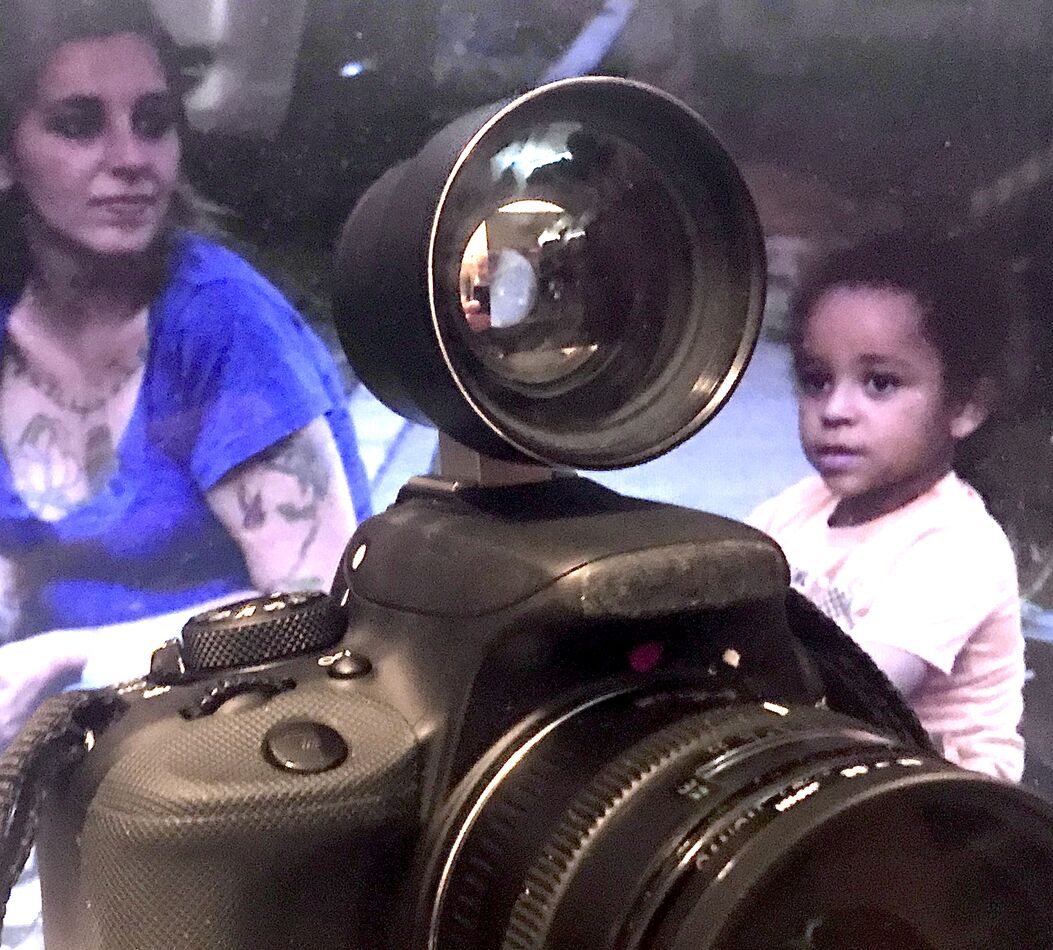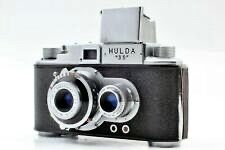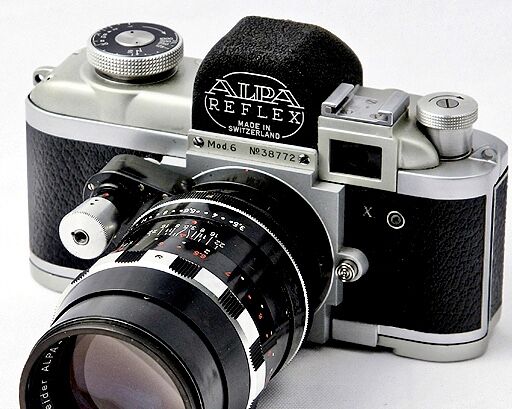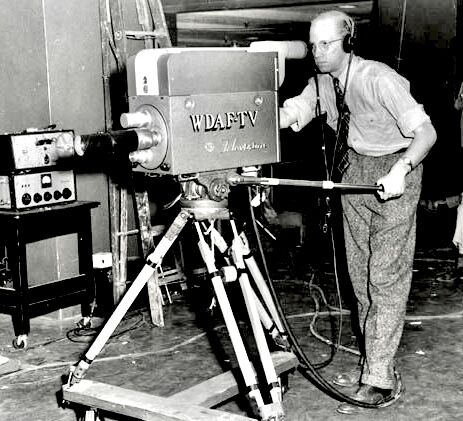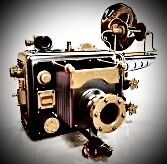The death of the optical finder.
Dec 17, 2022 15:28:30 #
I've got a couple of modern mirrorless cameras with rather good EVFs and two bridge cameras with so-so EVFs.
So I get where they offer a lot, especially with focus peaking, etc.
But how did the photo-computer industry convince people that the exclusive use of a screen on the back of a camera (or phone) was all that is needed to compose an image? Does nobody use cameras in broad daylight? To make matters worse, many controls are on the same touch screen.
So I get where they offer a lot, especially with focus peaking, etc.
But how did the photo-computer industry convince people that the exclusive use of a screen on the back of a camera (or phone) was all that is needed to compose an image? Does nobody use cameras in broad daylight? To make matters worse, many controls are on the same touch screen.
Dec 17, 2022 15:57:13 #
radiojohn wrote:
I've got a couple of modern mirrorless cameras with rather good EVFs and two bridge cameras with so-so EVFs.
So I get where they offer a lot, especially with focus peaking, etc.
But how did the photo-computer industry convince people that the exclusive use of a screen on the back of a camera (or phone) was all that is needed to compose an image? Does nobody use cameras in broad daylight? To make matters worse, many controls are on the same touch screen.
So I get where they offer a lot, especially with focus peaking, etc.
But how did the photo-computer industry convince people that the exclusive use of a screen on the back of a camera (or phone) was all that is needed to compose an image? Does nobody use cameras in broad daylight? To make matters worse, many controls are on the same touch screen.
Ask the people who use smartphone as camera. The screen is all they have and they all seem to be quite happy with that.
Dec 17, 2022 16:05:27 #
For many years in the last century, I used a 4x5 press camera equipped with rangefinders, footage scales, and OPTICAL viewfinders. When I switched to medium format, I oftentimes used the sports finders on TLR and 6x7(cm.) press cameras.
I liked Leicas with rangefinders and optical viewfinders.
When shooting quickly on press assignments, weddings, and events, I would scale focus. I am great on estimated distance, using hyperfocal distances, and knowing what kind of depth of field to expect. I like optical and wire finder because it was easier to frame, see expressions, and shoot quickly, especially in low light.
Nowadays with most digital equipment- NO MORE FOOTAGE SCALES, I depend on auto-focus in quick shooting situations.
If you really want an optical viewfinder, do what I did. I adapted an old Linhof optical finder and slid it into the accessory shoe atop the camera. It has variable masks that approximate the 35mm frame and adjustments can be improvised to approximate various focal lengths. It even tilts downward to compensate for parallax.
There are several for sale on eBay
I liked Leicas with rangefinders and optical viewfinders.
When shooting quickly on press assignments, weddings, and events, I would scale focus. I am great on estimated distance, using hyperfocal distances, and knowing what kind of depth of field to expect. I like optical and wire finder because it was easier to frame, see expressions, and shoot quickly, especially in low light.
Nowadays with most digital equipment- NO MORE FOOTAGE SCALES, I depend on auto-focus in quick shooting situations.
If you really want an optical viewfinder, do what I did. I adapted an old Linhof optical finder and slid it into the accessory shoe atop the camera. It has variable masks that approximate the 35mm frame and adjustments can be improvised to approximate various focal lengths. It even tilts downward to compensate for parallax.
There are several for sale on eBay
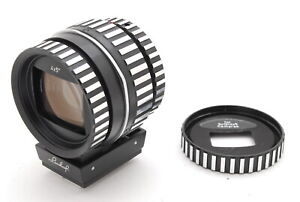
Dec 17, 2022 16:18:03 #
radiojohn wrote:
I've got a couple of modern mirrorless cameras with rather good EVFs and two bridge cameras with so-so EVFs.
So I get where they offer a lot, especially with focus peaking, etc.
But how did the photo-computer industry convince people that the exclusive use of a screen on the back of a camera (or phone) was all that is needed to compose an image? Does nobody use cameras in broad daylight? To make matters worse, many controls are on the same touch screen.
So I get where they offer a lot, especially with focus peaking, etc.
But how did the photo-computer industry convince people that the exclusive use of a screen on the back of a camera (or phone) was all that is needed to compose an image? Does nobody use cameras in broad daylight? To make matters worse, many controls are on the same touch screen.
First of all, I think you are really asking two questions.
The Electronic View Finder is not the LCD Screen on the back of the camera. The EVF is truly in the location where the optical viewfinder used to be--a small screen in the upper left corner of the back. [See the attached photo.] The internal computer takes a sampling of the actual pixel reads from the sensor and puts them in a jpeg form on the screen that is one-half inch or slightly more in diagonal measure.
On the other hand, the LCD display is the large screen on the back of the camera that may or may not pivot out of the plane of the back of the camera. It is usually in the vicinity off two inches in diagonal measure.
Now to give some responses to your questions. First, I like the EVF because, like the viewfinder in older SLR cameras. it displays what the lens actually sees and not some slightly off-axis picture that rangefinder cameras used to show.
I do agree that LCD screens often show very dim images when one is using a digital camera in bright sunlight. These have gotten better over the years, however, outdoors a photographer probably will want to depend upon the EVF. When one is in a setting where the LCD screen can be used, I like to do so because it frees me and my eyes up to look at the full scene of the picture I am framing instead of the truncated version seen through the viewfinder. So, I can see what my framing will leave out that I wish were in. Then only at the last minute do I have to fully concentrate on the LCD screen.
Just some of my thoughts on your questions. --Richard
my labels; photo: https://www.imaging-resource.com/PRODS/sony-a6000/Z-sony-a6000-back.JPG
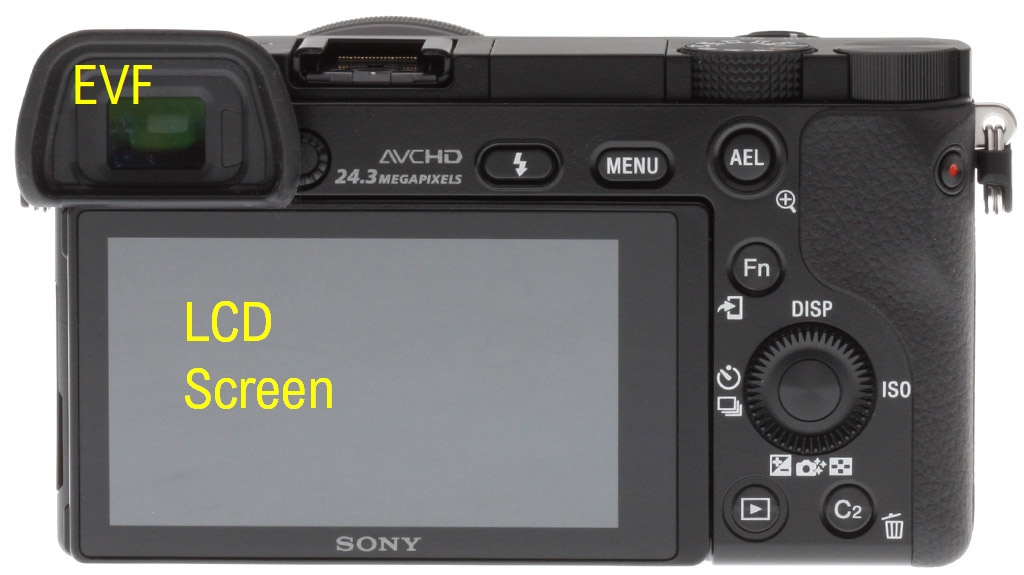
Dec 17, 2022 16:32:50 #
Have they ever taken a photo any other way and do they know they may be missing something?
Dec 17, 2022 17:05:11 #
radiojohn wrote:
I've got a couple of modern mirrorless cameras with rather good EVFs and two bridge cameras with so-so EVFs.
So I get where they offer a lot, especially with focus peaking, etc.
But how did the photo-computer industry convince people that the exclusive use of a screen on the back of a camera (or phone) was all that is needed to compose an image? Does nobody use cameras in broad daylight? To make matters worse, many controls are on the same touch screen.
So I get where they offer a lot, especially with focus peaking, etc.
But how did the photo-computer industry convince people that the exclusive use of a screen on the back of a camera (or phone) was all that is needed to compose an image? Does nobody use cameras in broad daylight? To make matters worse, many controls are on the same touch screen.
Dec 17, 2022 17:23:38 #
radiojohn wrote:
Have they ever taken a photo any other way and do they know they may be missing something?
I am curious. RadioJohn, what do you think they are missing? --Richard
Dec 17, 2022 17:25:39 #
Dec 17, 2022 17:35:10 #
larryepage
Loc: North Texas area
radiojohn wrote:
I've got a couple of modern mirrorless cameras with rather good EVFs and two bridge cameras with so-so EVFs.
So I get where they offer a lot, especially with focus peaking, etc.
But how did the photo-computer industry convince people that the exclusive use of a screen on the back of a camera (or phone) was all that is needed to compose an image? Does nobody use cameras in broad daylight? To make matters worse, many controls are on the same touch screen.
So I get where they offer a lot, especially with focus peaking, etc.
But how did the photo-computer industry convince people that the exclusive use of a screen on the back of a camera (or phone) was all that is needed to compose an image? Does nobody use cameras in broad daylight? To make matters worse, many controls are on the same touch screen.
I do not know the answer to your question.
I do know that probably 15 or 16 years ago, I bought a Coolpix P4 (P is an abbreviation for "Performance.") I still have it. It is a pretty decent little camera, and it is pretty useful, especially if I want to be a little bit "clandestine." Unfortunately, it fairly quickly turned out to be pretty unsuitable for work...it was incapable of focusing on moving machinery, and having only the rear display for framing proved unworkable in the varied and sometimes unpredictable factory environment where I needed to use it. It was replaced in a very short time by a D40, which, despite its own many limitations, proved to be much more versatile and usable. It offered both an option for manual focusing (and its autofocus was much faster and better), and the optical viewfinder was much more usable in almost every situation.
Perhaps the residue of that experience still taints my aversion to electronic viewfinders, perhaps something else is going on. The P4 did not have a touch screen, by the way. It will be interesting to see what other responses your inquiry generates. I do say that despite the distinction made by some between the eyepiece and the rear screen is not something that represents much of a difference for me...it's really the difference between the natural representation of the subject vs. an electronically created one. Of course...television production and videographers have been using electronic viewfinders with pretty good success for over 70 years. I've done it myself for many years when doing video. It makes no difference to me when I am doing still photography..I still like the optical view better.
Dec 17, 2022 17:45:46 #
By default. They built it that way, and people are buying it, built that way.
If only rear screen is offered, one's choice is buy or not buy.
Maybe they think everyone is used to it with the phones.
It does cut down on design and manufacturing expenses.
Just like try and find a short sleeve dress shirt, they basically quit making them.....
Did we all want them to quit? I didn't ask them to quit. They just did.
If only rear screen is offered, one's choice is buy or not buy.
Maybe they think everyone is used to it with the phones.
It does cut down on design and manufacturing expenses.
Just like try and find a short sleeve dress shirt, they basically quit making them.....
Did we all want them to quit? I didn't ask them to quit. They just did.
Dec 17, 2022 18:11:57 #
Dec 17, 2022 18:22:17 #
Dec 17, 2022 18:33:04 #
radiojohn wrote:
The ability to see the image clearly on a bright day when the screen is unreadable.
Yes, but then it is visible through the EVG holding it up to your eye as usual. --Richarde
Dec 18, 2022 04:30:19 #
zug55
Loc: Naivasha, Kenya, and Austin, Texas
profbowman wrote:
First of all, I think you are really asking two qu... (show quote)



I completely agree. Folks seem to confuse the electronic viewfinder (EVF) with the LCD screen. In the "good old days" of film and DSLRs, the viewfinder would produce an optical image. In mirrorless cameras (MILC), the viewfinder produces a digital image that is read out by the sensor, which in many ways is more accurate. Quality MILCs of all brands have an EVF in addition to the LCD screen, so I do not see a problem here.
Many point-and-shoot cameras and all cell phones do not have an EVF so photographers have to rely on the LCD screen. As some pointed out, me including, this makes it hard to take pictures in bright daylight. If that is an issue for you, don't buy a camera without an EVF.
The title of this thread therefore is misleading. The viewfinder is very much alive. It is the optical part that is dead.
Dec 18, 2022 06:18:57 #
Aside from the many advantages of mirrorless, the EVF allows me to see the exposure prior to shooting - and for me that was worth the price of admission all by itself.
If you want to reply, then register here. Registration is free and your account is created instantly, so you can post right away.



